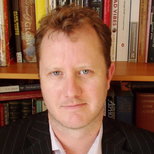Income inequality: the facts
SUGGESTED



In the UK, the Gini coefficient rose from 30.0 to 36.8 between 1985 and 1990. Since 1990, it has ranged from 32.3 and 36.2. In 2012/13 (the latest date for which figures are available at the time of writing), the Gini coefficient was 33.2, which is the same as it was in 1987 and more than three points lower than the 1990 peak (ONS 2014: 19). The graph below, taken from the Office for National Statistics, shows rates of income inequality since 1977.

Other standard measures of inequality tell the same story. Comparing the incomes of the 10th and 90th percentile* (the P10/P90 measure), the 20th and 80th percentile (the P20/P80 measure) and the 50th and 90th percentile (the P50/P90 measure) all show a rise in inequality in the 1980s followed by a modest decline.
International comparisons
Income inequality in the UK is neither very high nor very low by international standards. Most countries have a Gini of more than 35 and few have a Gini of less than 30. Amongst the countries which are classified by the United Nations as having a ‘very high’ level of development, the Gini coefficient ranges from 25.8 (Norway) to 52.1 (Chile). The range seen in the UK since 1990 (32.3 to 36.2) is above the EU and OECD averages, but is similar to that of such countries as Switzerland, Canada, Ireland, Spain and Australia (UN 2014: 168-71).
Income distribution
It is useful to go beyond the Gini coefficient to see how income has been distributed since 1990. The chart below (also from the ONS) shows the proportion of UK income going to each decile. This data confirm that there has been very little change over the past 25 years. The poorest five deciles have seen their share of income increase by one percentage point, with the exception of the bottom decile whose share has remained constant at 3 per cent. The richest five deciles have lost one percentage point, apart from the sixth decile which has remained constant and the top decile which has lost two percentage points.

The one per cent
In recent years it has become fashionable to talk about ‘the one percent’ at the top of the income distribution. The ONS does not collect much data on the top percentile, but data collected by the economist Thomas Piketty and the Institute for Fiscal Studies suggests that the share of income going to the highest earners has risen despite the share going to the top 10 per cent remaining broadly static. The 99/90 measure used by the Institute for Fiscal Studies shows a gradual widening of the gap between the 99th and 90th percentile between 1995 and 2010, suggesting that there has been a rise in income inequality within the richest ten per cent.
Insofar as there has been a change in the income distribution since 1990, it has all been within that top decile. It is not the richest ten per cent who have pulled away from the pack. It is, perhaps, the one per cent who have pulled away from the rest of the top 10 per cent.
Incomes
It is important to avoid the fallacy that national income is a fixed cake. Even if income inequality rises (as it may do as the economy recovers), it should not be inferred that the rich are taking from the poor or that the poor are getting poorer. Incomes are much higher amongst all groups today than they were in the 1970s when incomes were more evenly distributed. Despite the recent recession, average disposable incomes are more than twice as high as in 1977. The bottom quintile (the lowest 20 per cent of earners) have a disposable income that is 86 per cent higher – adjusted for inflation – than in 1977 (ONS 2014: 12).
To download the full briefing, click here.




